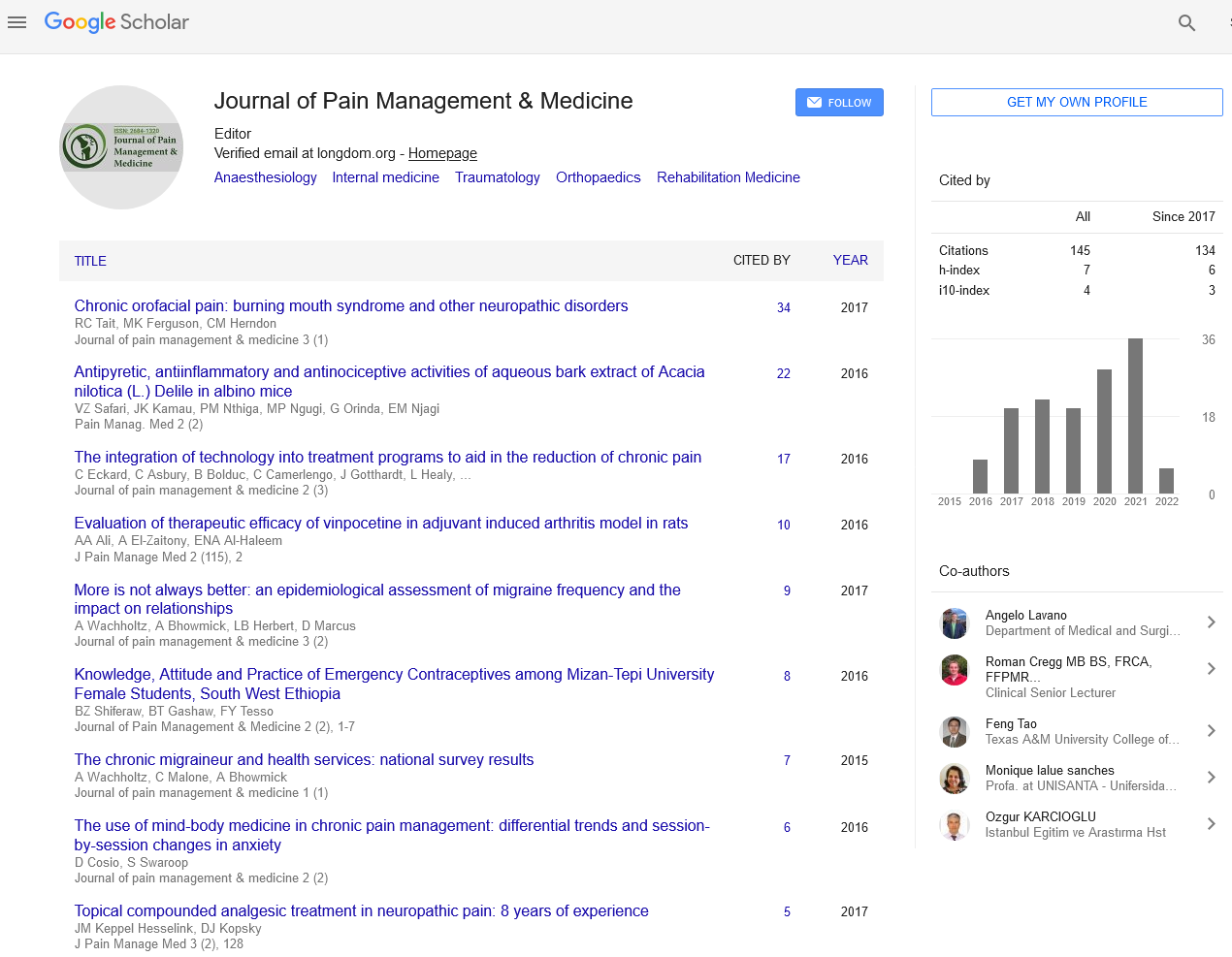Indexed In
- RefSeek
- Hamdard University
- EBSCO A-Z
- Publons
- Euro Pub
- Google Scholar
- Quality Open Access Market
Useful Links
Share This Page
Journal Flyer

Open Access Journals
- Agri and Aquaculture
- Biochemistry
- Bioinformatics & Systems Biology
- Business & Management
- Chemistry
- Clinical Sciences
- Engineering
- Food & Nutrition
- General Science
- Genetics & Molecular Biology
- Immunology & Microbiology
- Medical Sciences
- Neuroscience & Psychology
- Nursing & Health Care
- Pharmaceutical Sciences
Abstract
Vascular Surgery Pain Outcomes Improved by Implementing Hospitalist Comanagement Service
Chien Yi M. Png, Peter L. Faries, Lucia Y. Qian, Irene T. Lee, Rajiv Chander, David E. Finlay, Michael L. Marin and Rami O. Tadros
Introduction and Objective: This preliminary study aims to investigate the impact of introducing a hospitalist comanagement service on inpatient vascular surgery pain outcomes.
Methods: A total of 2110 consecutive patients were studied: 717 patients who were managed before the comanagement system was implemented (May 2011 to December 2012) and 1393 who were comanaged (January 2013 to December 2014). The visual analog pain (VAP) scores (ranging from no pain to severe pain) of each patient were analyzed. In addition, two questions from the Hospital Consumer Assessment of Healthcare Providers and Systems (HCAHPS) survey were additionally analyzed.
Results: The comanaged cohort experienced significantly higher rates of patients reporting no pain (Comanaged: 82.97% Not comanaged: 71.97%, p=<0.001) and significantly lower rates of mild pain (Comanaged: 7.39% Not comanaged: 12.55%, p=<0.001) and moderate pain (Comanaged: 7.68% Not comanaged: 13.11%, p=<0.001). The rates of severe pain were similar between groups (Comanaged: 1.93% Not comanaged: 2.37%, p=0.51). HCAHPS results showed increased rates of patients reporting that their pain was always well managed, as well as increased rates of patients reporting that the hospital staff always tried their best to manage their pain.
Conclusion: The implementation of a vascular co-management service resulted in significantly improved pain scores and improved HCAHPS scores.


